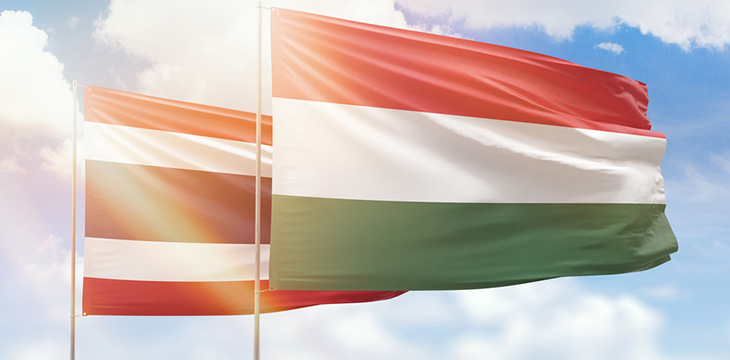Financial technology bodies of both Thailand and Hungary have entered into a bilateral partnership to explore the use of blockchain technology in their countries.
The Memorandum of Understanding (MOU) was signed by the Thai Fintech Association (TFA) and the Hungarian Blockchain Coalition on October 25. According to a Facebook post from the Hungarian embassy in Bangkok, the move allowed both associations to “share experiences, best practices and explore areas potentially beneficial for direct cooperation.”
The groundbreaking event introduced several Hungarian companies in the digital assets industry into Thailand’s growing ecosystem. Firms like WhiteHat, Family Finances, and Digital Farmers Market were urged by Chonladet Khemarattana, President of the TFA, to seize the occasion to make forays into Thailand.
Khemarattana stated that international collaboration would be instrumental in improving the local virtual assets industry while noting that Thailand is one of the fastest-growing countries in terms of adoption. He stated that Thailand was ranked 8th in the Chainalysis 2022 Global Crypto Adoption Index and claimed that 20% of the virtual asset users are in Thailand.
Despite the collaboration from both organizations, the use of blockchain and virtual assets in Hungary and Thailand faces stern tests from regulators. In Thailand, regulators are increasingly cracking down on digital asset lending platforms while service providers are staring at a potential ban on the provision of depository services.
Hungary’s central bank governor Gyorgy Matolcy urged the European Union (EU) to impose a blanket ban on digital asset trading across the region on the grounds that it was “speculative” and that it “serviced illegal activity.”
No to virtual currencies, but yes to DLT
While virtual currencies are facing tightening nooses in both jurisdictions, the use of DLT is receiving government patronage. Thailand’s central bank is leaning on the technology to explore a central bank digital currency (CBDC), with the pilot starting toward the end of the year.
Matolcy appears to be receptive towards CBDCs, noting that they “might be one of the next steps for digital currency to become a form of payment” but warned that a “learning-by-doing” strategy should be adopted.
In the EU, of which Hungary is a member, steady progress is being made toward using tokenized securities—virtual assets to represent stocks and bonds using DLT. The European Securities and Markets Authority (ESMA) has been given the operational responsibility to explore their usage for three years.
Watch: The BSV Global Blockchain Convention panel, The Future of Financial Services on Blockchain: More Efficiency & Inclusion
width=”562″ height=”315″ frameborder=”0″ allowfullscreen=”allowfullscreen”>
New to Bitcoin? Check out CoinGeek’s Bitcoin for Beginners section, the ultimate resource guide to learn more about Bitcoin—as originally envisioned by Satoshi Nakamoto—and blockchain.
Read More: news.google.com









 Bitcoin
Bitcoin  Ethereum
Ethereum  Tether
Tether  Solana
Solana  XRP
XRP  Dogecoin
Dogecoin  USDC
USDC  Cardano
Cardano  Lido Staked Ether
Lido Staked Ether  Avalanche
Avalanche  TRON
TRON  Toncoin
Toncoin  Stellar
Stellar  Wrapped stETH
Wrapped stETH  Shiba Inu
Shiba Inu  Wrapped Bitcoin
Wrapped Bitcoin  Polkadot
Polkadot  Chainlink
Chainlink  Bitcoin Cash
Bitcoin Cash  WETH
WETH  Sui
Sui  Pepe
Pepe  NEAR Protocol
NEAR Protocol  LEO Token
LEO Token  Litecoin
Litecoin  Uniswap
Uniswap  Aptos
Aptos  Wrapped eETH
Wrapped eETH  Hedera
Hedera  Internet Computer
Internet Computer  USDS
USDS  Cronos
Cronos  Ethereum Classic
Ethereum Classic  POL (ex-MATIC)
POL (ex-MATIC)  Artificial Superintelligence Alliance
Artificial Superintelligence Alliance  Bittensor
Bittensor  Render
Render  Ethena USDe
Ethena USDe  Arbitrum
Arbitrum  Filecoin
Filecoin  Celestia
Celestia  Dai
Dai  Algorand
Algorand  Stacks
Stacks  Bonk
Bonk  WhiteBIT Coin
WhiteBIT Coin  Cosmos Hub
Cosmos Hub